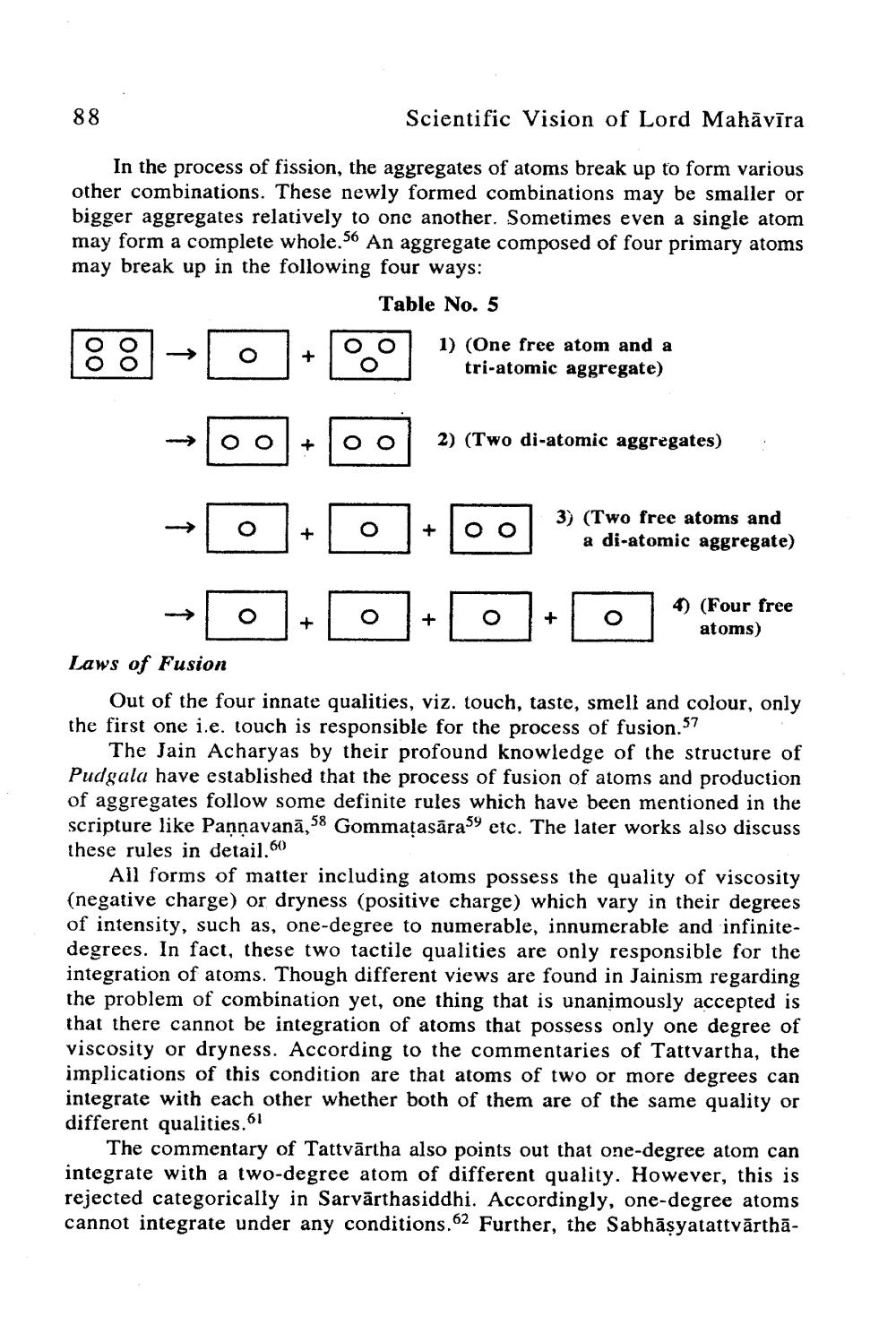________________
88
Scientific Vision of Lord Mahāvīra
In the process of fission, the aggregates of atoms break up to form various other combinations. These newly formed combinations may be smaller or bigger aggregates relatively to one another. Sometimes even a single atom may form a complete whole.56 An aggregate composed of four primary atoms may break up in the following four ways:
Table No. 5
88-0
001 ) one free atom and a
1) (One free atom and a
tri-atomic aggregate)
2) (Two di-atomic aggregates)
3) (Two free atoms and
a di-atomic aggregate)
+
0
+
0
+
0
+10) (Four free
4) (Four free
atoms)
Laws of Fusion
Out of the four innate qualities, viz. touch, taste, smell and colour, only the first one i.e. touch is responsible for the process of fusion.57
The Jain Acharyas by their profound knowledge of the structure of Pudgala have established that the process of fusion of atoms and production of aggregates follow some definite rules which have been mentioned in the scripture like Pannavanā,58 Gommatasara59 etc. The later works also discuss these rules in detail.60
All forms of matter including atoms possess the quality of viscosity (negative charge) or dryness (positive charge) which vary in their degrees of intensity, such as, one-degree to numerable, innumerable and infinitedegrees. In fact, these two tactile qualities are only responsible for the integration of atoms. Though different views are found in Jainism regarding the problem of combination yet, one thing that is unanimously accepted is that there cannot be integration of atoms that possess only one degree of viscosity or dryness. According to the commentaries of Tattvartha, the implications of this condition are that atoms of two or more degrees can integrate with each other whether both of them are of the same quality or different qualities. 61
The commentary of Tattvārtha also points out that one-degree atom can integrate with a two-degree atom of different quality. However, this is rejected categorically in Sarvārthasiddhi. Accordingly, one-degree atoms cannot integrate under any conditions. 62 Further, the Sabhāṣyatattvārthā




